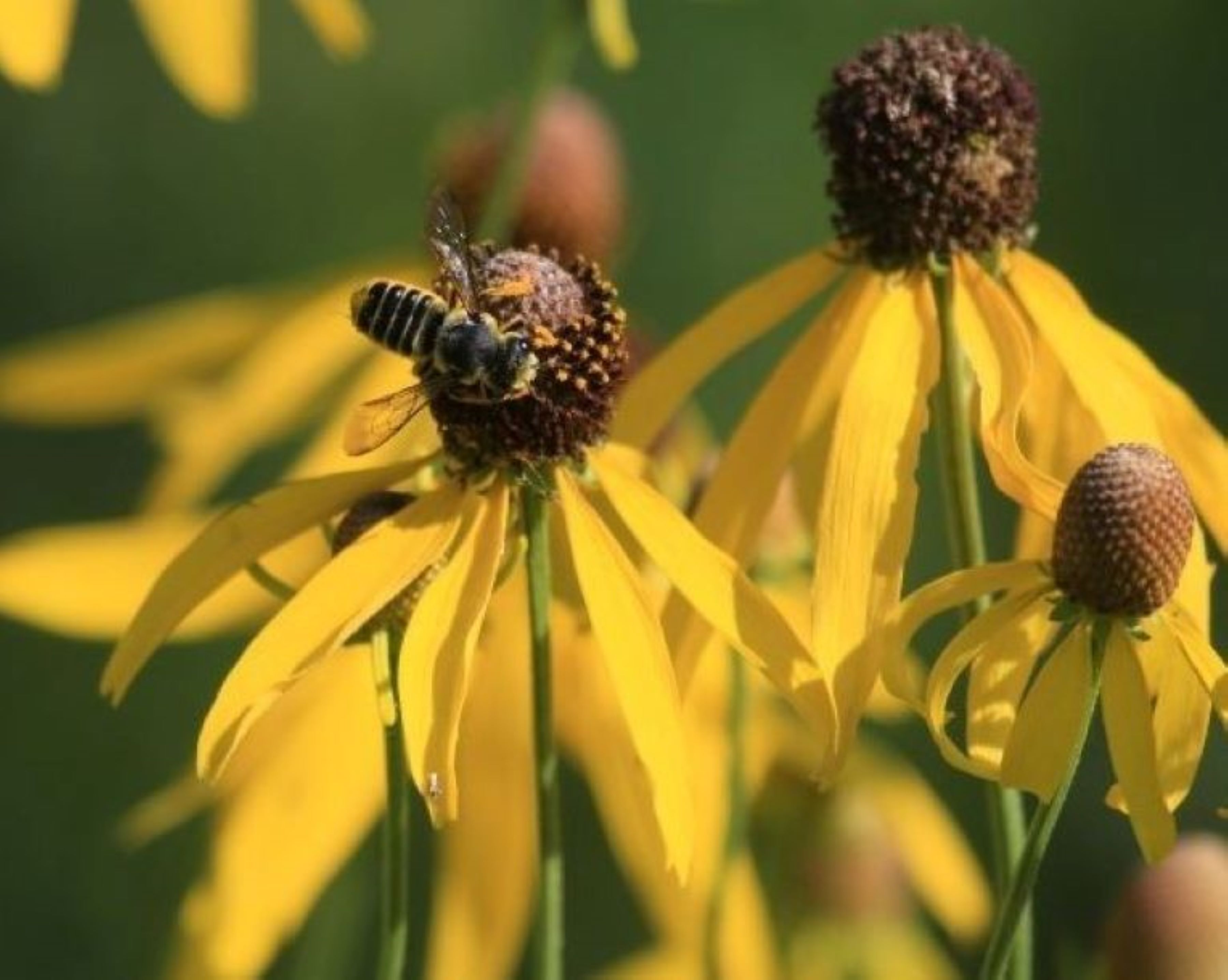
Protect Beneficial Insects by Delaying Spring Cleanup
By Dennis Patton
Pollinator protection is a valuable trend in the gardening world. Pollinators can come in many sizes and shapes, including the more noticeable butterflies and moths. However, our best pollinators in the garden are not always the showiest or most appreciated. The most effective pollinators are native bees, wasps, and flies. We tend to shoo them away instead of valuing their helpful behavior.
Butterflies, like the Monarchs, head south for the winter. Native butterflies and moths live in our landscapes through spring, summer, fall, and winter. We encourage their development by planting larval host plants for their eggs and offering supplemental nectar sources for nourishment during the growing season. We can increase over-wintering success if we retain their wintering habitats.
Native pollinators and beneficial insects spend their winter tucked into the leaf litter, burrowed into the soil and mulch, protected in cracks and crevices in trees and decaying wood, or hiding out in hollow stems of many decaying plants.
A pristine garden is not always the healthiest place for our natives to hang out. To put it simply, natives prefer the landscape to be a little messy. Nature's mess is home to their over-wintering eggs, larvae, or adult stages of development.
The trend in beneficial gardening is to let the garden sleep in. This debris is their overwintering home. Please don't get in a hurry to clean it up. When you pick the debris up and stuff or shred it into a waste bag to haul away, you kill off and remove the next generation before they can emerge and start the cycle over and contribute to part of a vital and healthy ecosystem.
When should we clean up the garden? It can be confusing to search for this information as you find varying opinions. One recommendation is to delay spring clean-up until the daily air temperatures are consistently above 50 degrees for at least a week.
Tracking air temperatures is easy. However, another recommendation is to delay clean-up until the soil temperatures are in the 50s for about a week. Tracking soil temperature is more challenging. Soil temperature can vary by location, soil type, and sunlight. The best source for tracking soil temps in our area is the Kansas State Mesonet Weather station in west Olathe. https://mesonet.k-state.edu/agriculture/soiltemp/ .
Watching for insect activity is the easiest way to know when to clean up. When you start seeing insects, the spring emergence is underway. Wait a few days to be sure and go for it. Remember, leave the garden a little messy. Old twigs, perennial stems, and leaf litter all make excellent nesting and habitat sites for the coming season.
If we all pitch in, we can save our pollinators, as our food chain and survival depend on these insects.
